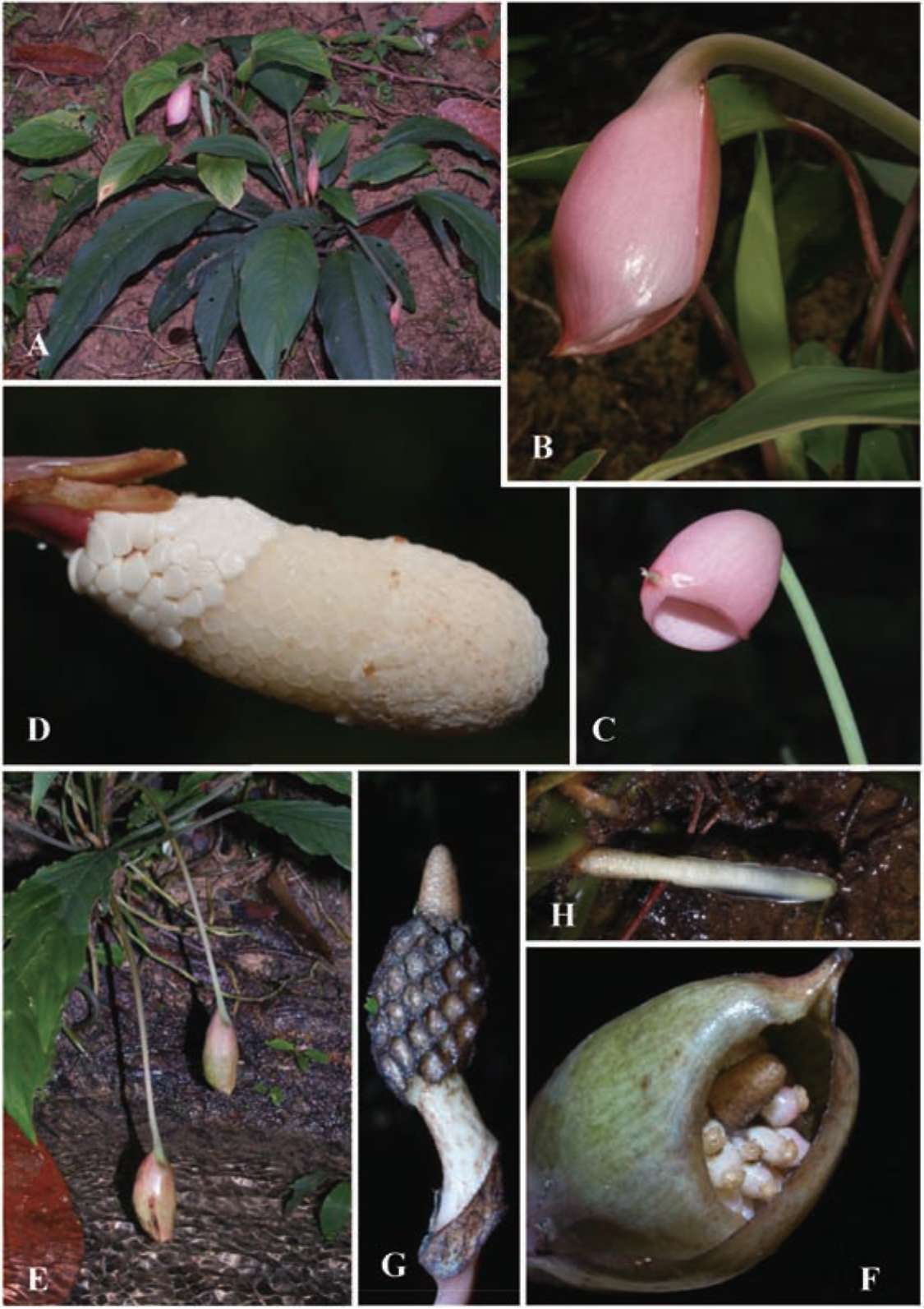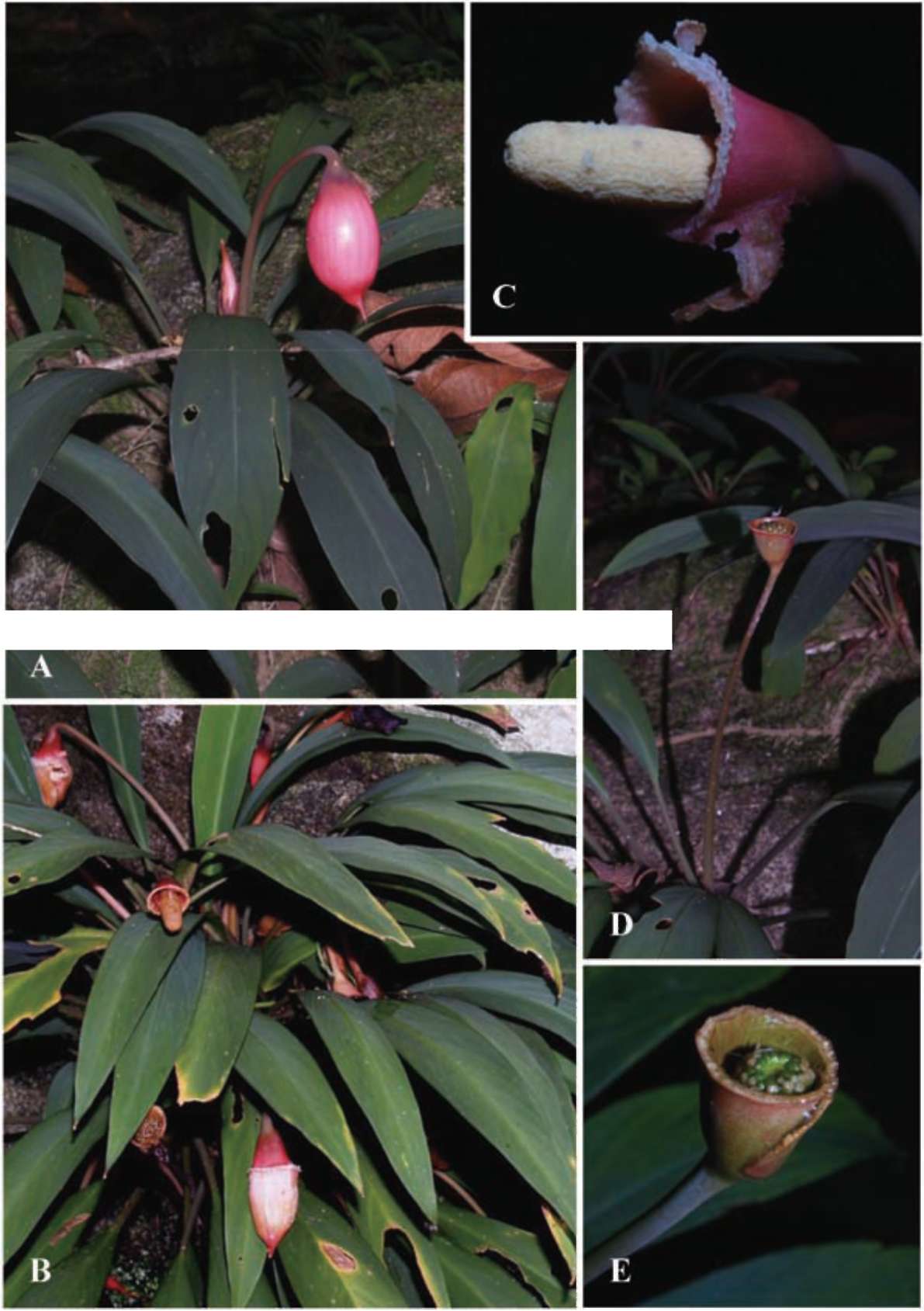Botanical Studies (2010) 51: 543-552.

Studies on Schismatoglottideae (Araceae) of Borneo XI:
Ooia, a new genus, and a new generic delimitation for Piptospatha
Ooia, a new genus, and a new generic delimitation for Piptospatha
Sin Yeng WONG1,2 * and Peter C. BOYCE3
1 Department of Plant Science and Environmental Ecology, Faculty of Resource Science and Technology, Universiti
Malaysia Sarawak, 94300 Samarahan, Sarawak, Malaysia
Malaysia Sarawak, 94300 Samarahan, Sarawak, Malaysia
2School of Biological Sciences, Universiti Sains Malaysia, 11800 Penang, Malaysia
3Forest Herbarium (BKF), The Office of Forest and Plant Conservation Research, National Park, Wildlife and Plant Conservation Department, 61 Phahonyothin Road, Chatuchak, Bangkok, 10900 Thailand
(Received April 16, 2009; Accepted November 23, 2009)
ABSTRACT. A new genus, Ooia S.Y. Wong & P.C. Boyce is erected from Piptospatha sensu Bogner & Hay with two species: Ooia grabowskii (Engl.) S.Y. Wong & P.C. Boyce and Ooia kinabaluensis S.Y. Wong & P.C. Boyce. Ooia is unique in the Tribe Schismatoglottideae owing to the persistence of the entire spadix axis through to fruit maturation and dispersal, with the entire axis remaining fresh and the non-female flowers sloughing away. Species of Piptospatha sensu Wong & Boyce are here delimitated to include only the Elon-gata Group, which as defined by Bogner & Hay includes the type species, Piptospatha insignis N.E. Br., but which is known only from the type, itself of imprecise origin.
Keyword: Araceae; Borneo; Ooia; Ooia grabowskii; Ooia kinabaluensis; Piptospatha; Schismatoglottideae.
INTRODUCTION
molecular phylogenetic study (Wong et al., 2010). Piptospatha sensu Bogner & Hay can now be said to comprise, based on the taxa sampled, three discrete monophyletic lineages; Piptospatha as understood here equates to the Elongata Group of Bogner & Hay while their Graboswkii Group comprises at least two lineages recognized here as the genera Bakoa (Boyce and Wong, 2008) and Ooia. Owing to field-time restraints several species moved to Piptospatha by Bogner & Hay (essentially taxa formerly included in Hottarum Bogner & Nicolson) have yet to be sampled for this study. The inclusion of these species in a planned extension to this study will quite likely further fragment Piptospatha sensu Bogner & Hay in such a way that it will in all probability be shown to comprise five lineages. An additional problem is that the type of Piptospatha is P. insignis N.E. Br., which is known only from a preserved cultivated plant ex Sabah, Malaysia and has never been re-collected. Piptospatha insignis, long-projecting anther connective makes it unique in the genus. Until this species is re-collected and sampled, it is better for the Elongata Group to remain in the genus Piptospatha pending further investigation and with the caveat that the type species may very well not be congeneric with other taxa currently (i.e., Bogner and Hay, 2000) assigned to the genus. Removal of P. insignis would render Piptospatha monospecific and would require that the Elongata Group be transferred to Rhynchopyle Engl., currently a generic synonym of Piptospatha.
Based on molecular analyses of two plastid regions by the first author (Wong et al., 2010) and combined morphological analyses of the very distinctive inflorescence morphology, spathe senescence and dispersal mechanics, tribe Schismatoglottideae has been split into two tribes, with Philonotieae, representing the former neotropical 'Schismatoglottis". Apart from this, 4 new genera have been recognized, Bakoa, Schottariella, Hestia, and Pichinia, together with the resurrection of Apoballis (Boyce and Wong, 2008; 2009; Wong and Boyce, 2009; 2010a; 2010b). In addition to these changes, Piptospatha sensu Bogner and Hay (2000) is polyphyletic. Besides the removal of Piptospatha lucens into Bakoa (Boyce and Wong, 2008), it is concluded here that the Piptospatha Grabowskii Group is a separate genus based on molecular work.
An historical overview of Piptospatha was provided by Bogner and Hay (2000). The characters used by Bogner & Hay to set generic boundaries were essentially those of Hotta (1965; 1966; 1976), which outlined a genus having an inflorescence without a lower spathe/spathe limb constriction, seeds with micropylar appendages, staminate flowers lacking thecae horns, and a free ligular petiolar sheath. This generic circumscription is not supported by
*Corresponding author: E-mail: sywong@frst.unimas.my.

